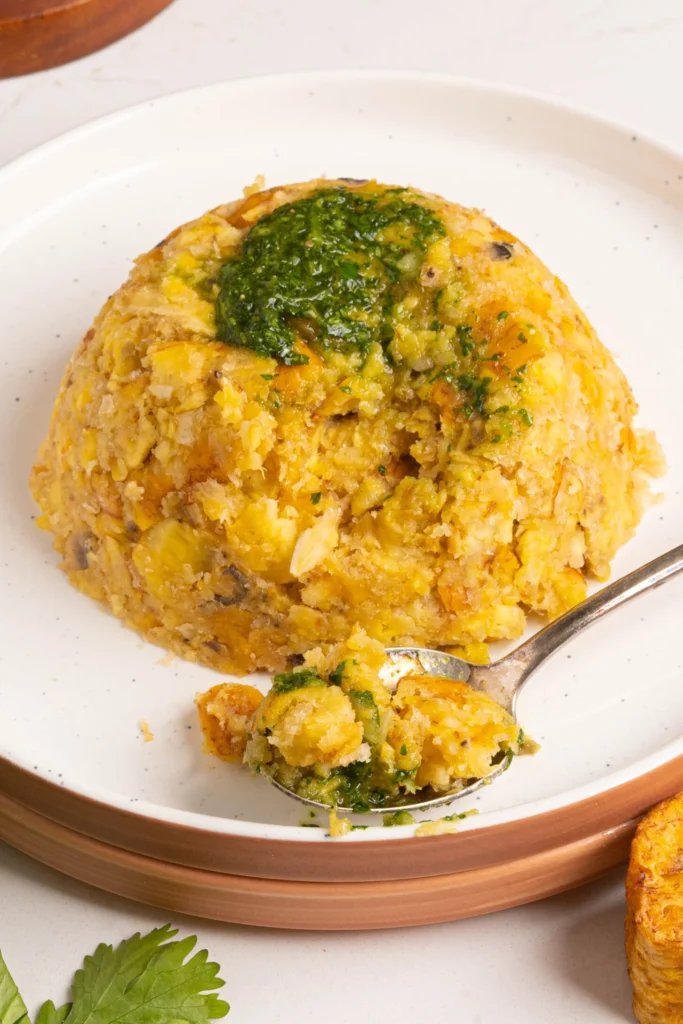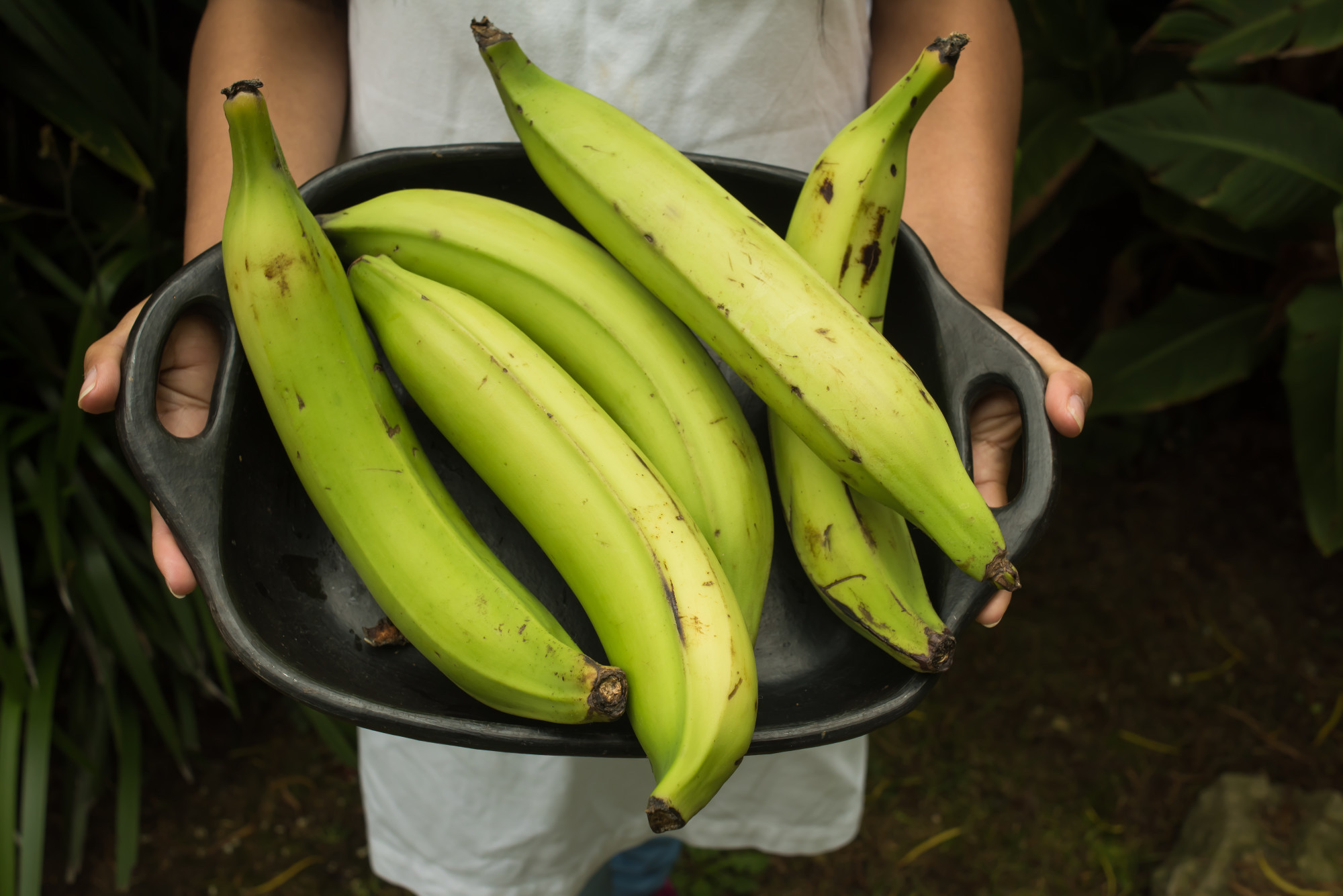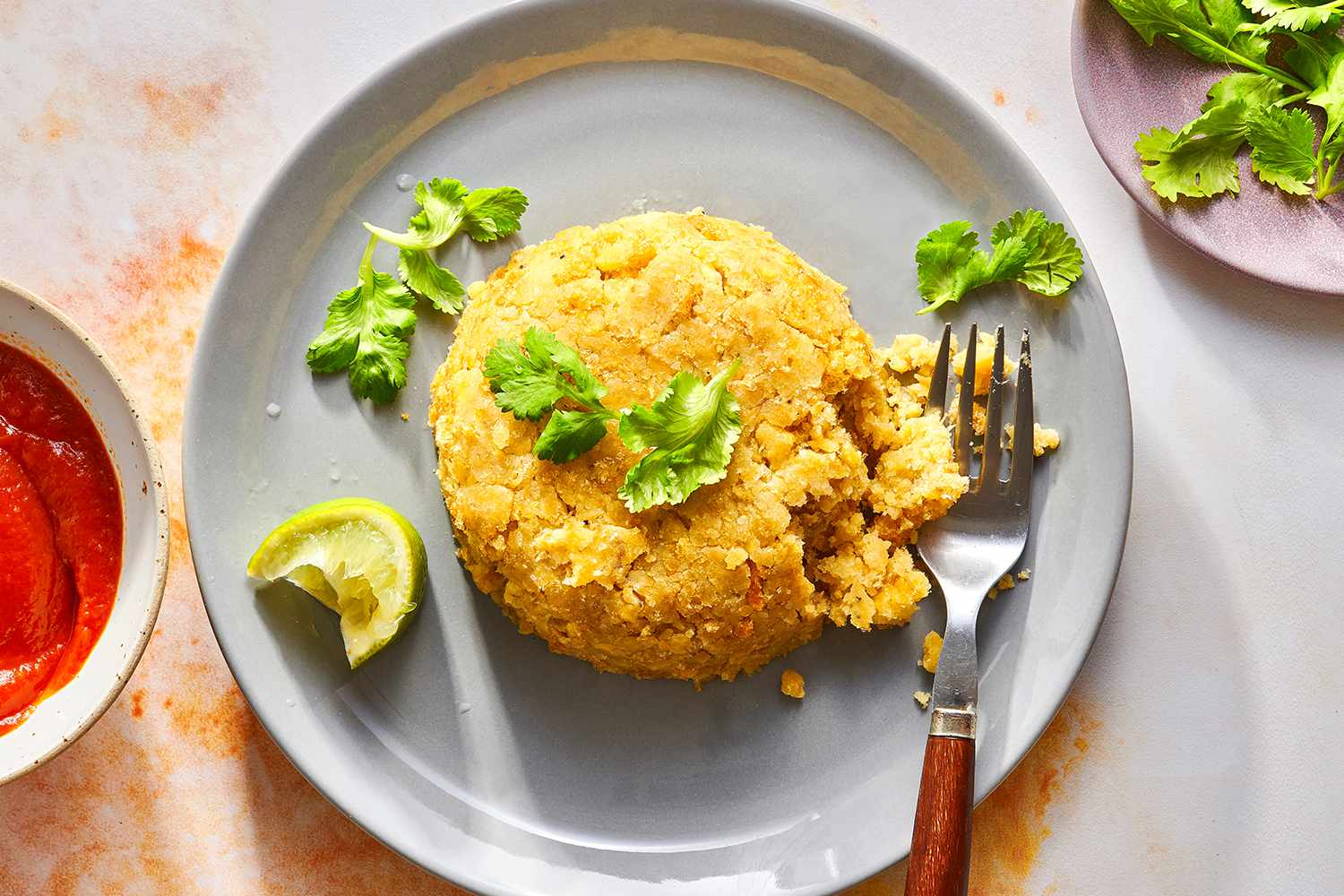Mofongo, a flavorful staple of Caribbean cuisine, often sparks curiosity about Does mofongo have gluten and its compatibility with gluten-free diets. This traditional dish, with its roots deeply embedded in Puerto Rican culture, is typically made from green plantains that are fried, mashed, and mixed with garlic and various other ingredients. But does this comfort food align with the needs of those avoiding gluten?
Understanding the gluten content in foods is crucial for individuals with celiac disease or gluten sensitivity. This article delves into the composition of mofongo, examining each ingredient to determine whether this dish can be enjoyed without concern.
We’ll also share tips for preparing a gluten-free version of mofongo, ensuring that everyone can savor its rich taste and unique texture.
Whether dining out or cooking at home, this guide will navigate you through the delicious world of mofongo, gluten-free style. Let’s explore: Does mofongo have gluten?

Mofongo’s Ingredients Analyzed
Understanding the ingredients of mofongo is key to determining its gluten content. Let’s break down the components and their preparation to ensure that those with gluten sensitivities can enjoy this dish worry-free.

Primary Components
Mofongo’s base is made of green plantains, which are naturally gluten-free. These starchy fruits are peeled, sliced, and fried until they’re golden brown. Once fried, they’re mashed with a mortar and pestle, a process that releases the starches and allows them to bind together.
Plantains: Nature’s Gluten-Free Starch
Plantains are a staple in tropical regions and are known for their versatility. Unlike bananas, plantains are less sweet and more starchy, making them perfect for savory dishes like mofongo. They are an excellent source of complex carbohydrates and fiber, and most importantly for our discussion, they are gluten-free.


Garlic and Oil: Flavor Without the Gluten
Garlic is crushed and mixed with oil to create a flavorful paste that’s incorporated into the mashed plantains. This mixture is what gives mofongo its signature taste. The oil used is typically olive or vegetable oil, both of which are gluten-free. It’s important to ensure that the garlic and oil are pure and not contaminated with gluten-containing substances.
Common Additions and Variations
While the basic mofongo recipe is gluten-free, variations and additions can introduce gluten. Let’s look at some common ingredients and how to keep them gluten-free.
Chicharrones (Pork Rinds): Typically Gluten-Free
Chicharrones, or pork rinds, are a common addition to mofongo. They add a crunchy texture and savory flavor. Most chicharrones are gluten-free, but it’s crucial to check the packaging for any wheat-based products or cross-contamination warnings.
Seafood, Beef, or Chicken Stews: Potential Gluten Sources
Mofongo is often served with a side of stew, which can be made from seafood, beef, or chicken. These stews can contain gluten, especially if they’re thickened with flour. When preparing or ordering stew, ensure that it’s thickened with a gluten-free alternative like cornstarch or simply reduced until it reaches the desired consistency.


To maintain a gluten-free diet, it’s essential to be vigilant about the ingredients in these stews. Flour is a common thickening agent, but it contains gluten, which can be problematic for those with sensitivities. Instead, opt for gluten-free thickeners like cornstarch, arrowroot, or potato starch. These alternatives provide the same thickening effect without the gluten.
Preparing Gluten-Free Mofongo
When it comes to preparing gluten-free mofongo, the key is to ensure that every step of the cooking process is safe for those with gluten sensitivities. Here’s a detailed guide to help you make delicious mofongo that everyone can enjoy.
Kitchen Best Practices
Avoiding Cross-Contamination
Cross-contamination is a concern for anyone with celiac disease or gluten intolerance. To prevent this:
- Use separate cooking tools and surfaces for gluten-free foods.
- Clean all surfaces thoroughly before starting.
- Consider using color-coded utensils to keep gluten-free items distinct.

Communicating with Chefs About Celiac Disease
If you’re dining out, it’s crucial to communicate your dietary needs:
- Inform the chef or kitchen staff about your gluten intolerance.
- Ask about their procedures to prevent cross-contamination.
- Ensure they understand the severity of celiac disease and the importance of a gluten-free meal.
Substitutions and Alternatives
Gluten-Free Adobo Seasoning
Adobo seasoning often contains garlic, onion, black pepper, oregano, and sometimes citrus zest. To ensure it’s gluten-free:
- Purchase brands that are certified gluten-free.
- Make your own blend using individual spices that are labeled gluten-free.
Vegan and Vegetarian Substitutes for Chicharrones
Chicharrones are a traditional component in mofongo, but for a vegan or vegetarian version:
- Use crispy fried tofu or tempeh for a similar texture.
- Consider adding roasted nuts or seeds for an extra crunch.


Dining Out: Navigating Gluten-Free Mofongo
When it comes to enjoying mofongo outside the comfort of your home, being informed is your best tool. Here’s how you can ensure a safe and satisfying dining experience.
Understanding Restaurant Practices: Before you decide on a restaurant, do a bit of research. Look for establishments that are known for accommodating gluten-free diets. Many restaurants now offer gluten-free menus or mark gluten-free options clearly.
Questions to Ask Your Server: Does mofongo have gluten?
Once at the restaurant, communicate with your server about your dietary needs. Here are some questions you might ask:
- Do you have a dedicated gluten-free menu?
- Can the chef make a gluten-free version of mofongo?
- Are there separate cooking areas and utensils for gluten-free dishes?
Identifying Hidden Gluten Sources
Even if a dish appears to be gluten-free, hidden sources of gluten can lurk in sauces, gravies, and seasonings. Ensure that the restaurant is aware of these potential pitfalls and ask them to confirm the ingredients in your meal.
Making Mofongo at Home: A Gluten-Free Guide
Preparing mofongo at home can be a delightful and safe experience. Follow these steps to create a delicious gluten-free mofongo.
Selecting Your Ingredients
Start with fresh green plantains. Choose plantains that are firm and green, as they are less sweet and better suited for mofongo. For the garlic and oil mixture, use fresh garlic and a high-quality oil like olive or vegetable oil.
Preparing the Plantains
- Peel the plantains by cutting the ends and making a slit along the side.
- Cut the plantains into thick slices, about one inch each.
- Fry the slices in a pan with oil until they are golden brown and tender.

Mashing and Mixing
- Remove the plantains from the oil and drain them on a paper towel.
- While still warm, place them in a mortar and pestle.
- Add the garlic and oil mixture and mash everything together until it forms a cohesive mass.

Customizing Your Mofongo
Mofongo is versatile, so feel free to add ingredients that cater to your taste. If you enjoy a bit of crunch, consider adding gluten-free chicharrones or crispy onions. For extra flavour, mix in some chopped cilantro or a squeeze of lime juice.
Final Touches
- Once mashed to your liking, shape the mofongo into balls or a dome.
- Serve immediately, with a side of gluten-free stew or sauce if desired.

Final Analysis
We just explored “Does mofongo have gluten?”. With careful attention to the ingredients and preparation methods, mofongo can be a delightful addition to a gluten-free diet. For those with celiac disease or gluten sensitivity, the journey to enjoying traditional dishes like mofongo can be fraught with challenges.
However, with the rise of gluten-free awareness and the availability of alternative ingredients, it’s possible to savor the flavors of mofongo without worry. Whether you choose to dine out or prepare it at home, the key to a safe and enjoyable experience is knowledge and communication. By understanding the ingredients, asking the right questions, and taking the necessary precautions, you can ensure that your mofongo is free from gluten and full of flavor.
Jl.Surjan
Disclosure: Our blog contains affiliate links to products. We may receive a commission for purchases made through these links. However, this does not impact our reviews and comparisons. We try our best to keep things fair and balanced, in order to help you make the best choice for you.







